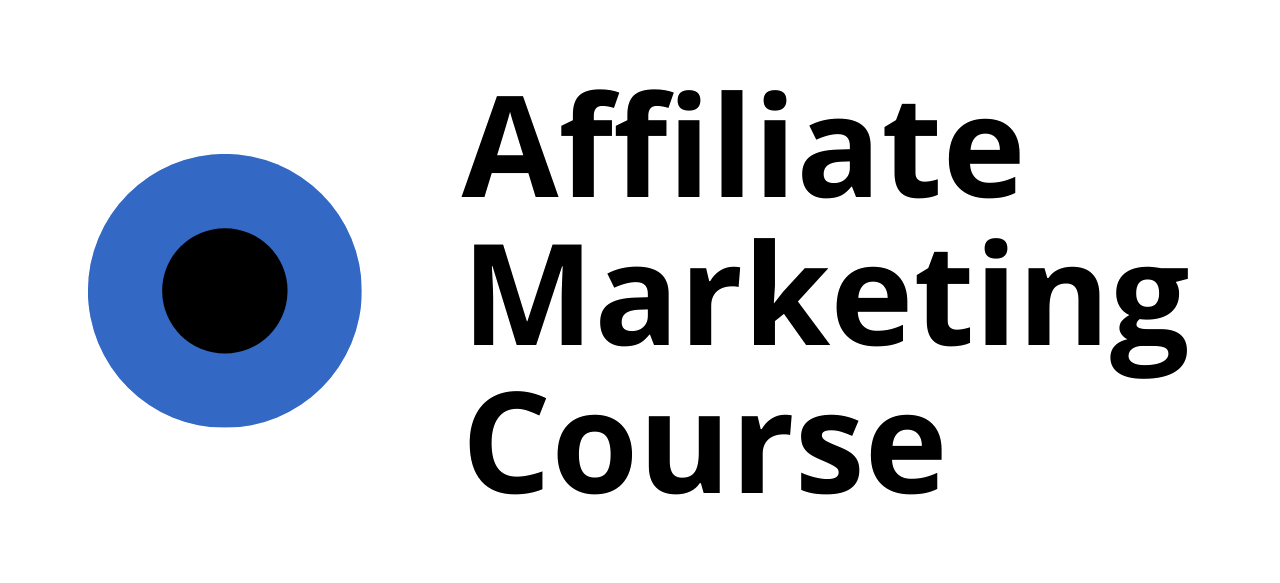Unlocking Affiliate Marketing Growth Strategies: Answers to Top Questions
Are you looking to unlock the full potential of your affiliate marketing efforts? Whether you’re just starting out or aiming to scale your current program, understanding the best practices and strategies is crucial for long-term success. In this comprehensive guide, we’ll dive into proven techniques, actionable tips, and insights to help you overcome common challenges and achieve sustainable growth. From mastering the 80/20 rule to exploring innovative ways to leverage content creation and paid advertising, this article covers everything you need to know to stay ahead in the ever-evolving world of affiliate marketing.

The 80/20 Rule in Affiliate Marketing
The 80/20 rule in affiliate marketing is a powerful concept that emphasizes the importance of focusing on a small percentage of high-performing affiliates to drive the majority of sales. This principle states that approximately 80% of revenue comes from around 20% of your affiliate partners. Understanding and leveraging this rule can significantly enhance your affiliate marketing strategy.
Benefits of the 80/20 Rule
By applying the 80/20 rule, you can optimize your affiliate program to maximize ROI. Here’s how it works:
- For Merchants : It allows you to identify top-performing affiliates who contribute the most to your sales. Focusing on these partners ensures better returns on your investment and strengthens your affiliate relationships.
- For Affiliates : It helps affiliate marketers concentrate their efforts on the strategies and campaigns that yield the highest conversions. This efficiency allows them to scale their earnings more quickly.
Examples of Successful Application
Consider the example of a merchant working with a group of affiliates. If 20% of these affiliates account for 80% of the sales, the merchant can allocate more resources to these top performers, such as offering better commission rates or exclusive deals. Conversely, the 20% of underperforming affiliates can be given less attention or even removed from the program to improve overall profitability.
How to Implement the Rule Effectively
To successfully apply the 80/20 rule, follow these steps:
- Track Performance : Regularly monitor which affiliates are driving the most sales. Use analytics tools to measure metrics like conversion rates and commissions.
- Focus Resources : Allocate more time, budget, and support to your top-performing affiliates. This includes offering incentives and providing dedicated support to help them succeed.
- Evaluate Underperformers : Identify and address the reasons behind poor performance. Whether it’s through additional training, improved marketing materials, or better customer support, take action to boost their effectiveness.
- Optimize Programs : Continuously refine your affiliate program to attract and retain top talent. Consider updating commission structures, introducing tiered rewards, or expanding your reach through new marketing channels.
By applying the 80/20 rule, you can create a more efficient and profitable affiliate marketing program that benefits both merchants and affiliates. This approach not only boosts ROI but also fosters stronger partnerships in the long run.
Learn more about optimizing your affiliate marketing strategy .
Best Strategy for Affiliate Marketing
Building a successful affiliate marketing strategy requires a well-rounded approach that focuses on both attracting audience and converting clicks into commissions. Below are key components of an effective affiliate marketing plan:
1. Choose the Right Affiliate Program
Start by selecting affiliate programs that align with your audience’s interests and your personal expertise. Look for programs offering competitive commission rates, robust support, and reliable tracking tools. Consider well-known platforms like Affiliate Marketing Course for comprehensive guidance.
2. Build a Strong Online Presence
Establish a professional website or blog dedicated to your niche. Create high-quality, engaging content that provides value to your audience. Use SEO techniques to optimize your site for search engines and ensure your content ranks well for relevant keywords associated with your affiliate offers.
3. Create Compelling Content
Content is king in affiliate marketing. Develop articles, videos, and guides that educate your audience and position you as an authority in your niche. Incorporate affiliate links naturally within your content, ensuring they don’t disrupt the reading experience.
4. Drive Targeted Traffic
Focus on generating traffic from audiences who are interested in your niche. Utilize social media platforms, email marketing, and paid advertising campaigns to reach your target demographic. Leverage retargeting ads to convert visitors who showed interest in your site but didn’t purchase.
5. Optimize for Monetization
Experiment with different monetization strategies beyond traditional affiliate links. Write detailed product reviews, create comparison charts, and offer exclusive deals or discounts. Consider incorporating affiliate links into your email newsletters and social media posts.
6. Stay Compliant and Ethical
Always adhere to legal requirements, such as disclosing affiliate relationships (e.g., using affiliate links ) and avoiding spammy tactics. Building trust with your audience is essential for long-term success in affiliate marketing.
7. Continuously Optimize and Improve
Monitor your campaign performance using analytics tools to identify what works and what doesn’t. Conduct A/B testing on landing pages and ad creatives to maximize conversion rates. Stay updated on industry trends and adapt your strategies accordingly.
8. Build Relationships with Affiliate Programs
Nurturing relationships with affiliate networks and programs can open doors to better opportunities and higher commission rates. Regularly engage with program representatives to ensure smooth operations and capitalize on promotional offers. By implementing these strategies and staying committed to your goals, you can build a thriving affiliate marketing business that delivers value to your audience while generating substantial income.

Can you make $100 a day with affiliate marketing?
Yes, it’s absolutely possible to earn $100 or more daily through affiliate marketing with consistent effort and the right strategies. Affiliate marketing offers a lucrative opportunity for those willing to put in the work to build a profitable online presence.
Steps to Achieve $100 Per Day in Affiliate Marketing
- Research and Select Your Niche: Choose a niche you’re passionate about and find products to promote. Look for industries with high demand and competition.
- Build a High-Quality Website: Create a professional website with valuable content to attract visitors. Use SEO techniques to rank your site higher in search engine results.
- Drive Traffic to Your Site: Utilize various traffic sources like social media platforms, email marketing, and content syndication to bring targeted visitors to your site.
- Monetize Effectively: Promote affiliate products or services that align with your audience’s interests. Use affiliate links strategically within your content to maximize earnings.
- Optimize Conversion Rates: Focus on creating compelling content and calls-to-action to increase the likelihood of your audience clicking on your affiliate links and making purchases.
- Persist and Adapt: Affiliate marketing requires continuous learning and adaptation. Track your results, analyze what’s working, and adjust your strategies accordingly.
By following these steps and staying committed, you can build a sustainable affiliate marketing business that generates significant income, including reaching $100 per day or more. Remember, success in affiliate marketing often hinges on patience, dedication, and a willingness to continuously improve your approach.

The Three Pillars of Affiliate Marketing
Affiliate marketing operates on three primary pillars that form the foundation of its success. These pillars ensure that affiliate programs are effectively managed, drive targeted traffic, and deliver measurable results.
- 1. Partner Relationships:** Building strong, mutually beneficial partnerships with merchants is the cornerstone of affiliate marketing. This pillar focuses on fostering trust, clear communication, and shared goals between affiliates and merchants. By understanding each other’s objectives, parties can collaborate more effectively to maximize ROI for both.
- 2. Technology and Tools:** Utilizing robust tools and platforms is essential for tracking performance, managing affiliate networks, and optimizing campaigns. Advanced analytics tools allow affiliates to monitor conversion rates, commission payouts, and overall program effectiveness, enabling data-driven decision-making.
- 3. Traffic Generation:** Driving targeted and high-quality traffic is the lifeblood of affiliate marketing. This pillar encompasses strategies such as content marketing, SEO, social media promotion, and email marketing to attract the right audience to merchant websites. Effective traffic generation ensures that affiliate links are clicked by interested consumers.
By focusing on these three pillars, affiliate programs can achieve long-term success, delivering value to both affiliates and merchants while meeting regulatory requirements and maintaining ethical standards.
The Hardest Part of Affiliate Marketing
Affiliate marketing is a dynamic and rewarding venture, yet it presents several challenges that require careful navigation. Here are the key hurdles:
- Understanding the Audience:** Tailoring strategies to resonate with the target audience is paramount. Knowing their preferences, pain points, and behaviors helps in crafting effective promotions. However, deciphering these aspects can be complex due to the diversity among consumers.
- Technical Setup:** Establishing a robust online presence involves creating a functional website, optimizing it for user experience, and driving organic traffic. Technical intricacies like SEO, ad placements, and analytics can be overwhelming for newcomers.
- Building Trust:** Gaining the trust of potential customers is essential. Affiliates must demonstrate expertise and reliability through genuine reviews, transparent communication, and consistent delivery of value, which demands time and effort.
- Competitive Landscape:** The affiliate space is highly competitive, necessitating unique approaches and innovative strategies to stand out. This includes offering distinct content, leveraging advanced marketing tactics, and fostering stronger connections with audiences.
- Monetization Strategies:** Effectively placing ads and links without disrupting user experience, while adhering to guidelines, is a meticulous process. Additionally, securing approvals from various programs requires meeting stringent criteria, which can be challenging initially.
- Adaptation to Trends:** The digital marketing landscape evolves rapidly, requiring continuous learning and adaptation. Keeping abreast of emerging trends and tools is crucial for staying competitive and relevant.
- Consistency and Patience:** Affiliate marketing lacks immediate returns. Building a sustainable business demands patience, persistence, and consistent effort, as outcomes often take time to manifest.

What is KPI in Affiliate Marketing?
Key Performance Indicators (KPIs) are essential tools for measuring success in affiliate marketing. They provide insights into various aspects of your marketing efforts, helping you optimize your strategies and achieve better results. Below are the most critical KPIs for affiliate marketing:
- Click-Through Rate (CTR) : Measures how often users click on your affiliate links compared to the total number of impressions. A higher CTR indicates that your content is engaging and relevant.
- Conversion Rate : Represents the percentage of clicks that convert into sales or leads. This metric helps you understand the effectiveness of your affiliate offers.
- Cost Per Acquisition (CPA) : Calculated as the cost divided by the number of conversions, CPA shows how much you’re spending to acquire each customer. Lower values indicate better profitability.
- Revenue Per Customer (RPC) : Indicates the average revenue generated per customer. Higher RPC means your customers are generating more income for your business.
- Clicks : Tracks the total number of times users interact with your affiliate links. This metric helps you gauge the reach and popularity of your content.
- Commissions Earned : Monitors the total commissions generated from your affiliate marketing efforts. This is a direct measure of your marketing success.
- Return on Ad Spend (ROAS) : Calculates the profit from your affiliate marketing campaigns relative to the amount spent on advertising. Higher ROAS indicates a profitable campaign.
- Customer Retention Rate : Measures how often customers return to make repeat purchases. High retention rates indicate satisfied customers and strong brand loyalty.
By regularly monitoring these KPIs, affiliate marketers can identify areas for improvement, optimize their strategies, and ultimately drive better results. Tracking these metrics ensures that your efforts align with your business goals and help you stay competitive in the affiliate marketing space.




0 Comments